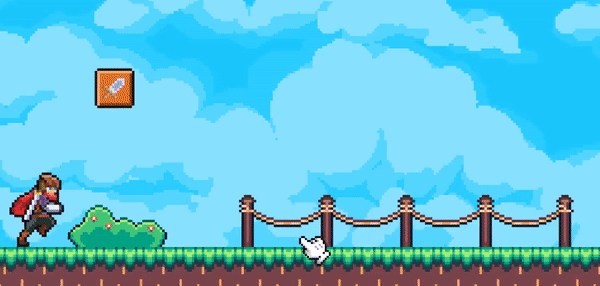Retro pixel art game Idle Slayer is the brainchild of creative powerhouse Pablo Leban. This jack-of-all-trades solo developer combined his love for gaming and his core belief in engaged communities to carve out a unique niche in a crowded gaming industry—turning a passion project into a huge financial success in a remarkably short time.
In this series of articles, we want to go behind the scenes into the incredible growth journey of Idle Slayer, which at the time of writing has just completed an exciting IP crossover with the classic fan-favorite Shovel Knight. It’s a tale of innovation, community building, love for the game, and strategic partnerships. There are deep lessons here for every game developer, so if you’ve come for your daily dose of inspiration, you won’t be disappointed.
Let’s jump in.
In September 2020, Pablo decided to take a big step: he quit his job to start working full-time as a developer—creating his own game. The concept would distill his lifelong passion for games into an epic gaming project that could be shared with a community of fellow gamers, who would help it evolve and grow over time.
And that’s exactly what happened. From day one, Pablo put his community front and center, using ideas and feedback from players to continually improve the game, and this, combined with an intuition for creating those magical elements that make great games, well, great, put him firmly on the path to success.
A player on Reddit asks: “Thanks Pablo for updating the game! But also why?”
Pablo’s reply: “Player engagement is what motivates me the most…Some days I make music, some I do social management and data analytics and some other days I do coding and game design…I really love what I’m doing and for now I don’t see any reason to stop 😉
I just treat the game as a game I would like to play, with constant updates and tons of content.”
Spend just a few minutes in Idle Slayer’s Discord, Reddit, or Patreon communities and you will see what happens when a developer who deeply cares about the player experience meets an equally passionate community whose voices are being heard.
All the while, Pablo was adding fresh content, building lore, and coming up with standout game features like the highly addictive random box-opening mechanic that players love.

If you haven’t played it, Idle Slayer is a retro pixel art game available across Android, iOS, and Steam. The game draws you in with its deceptively simple yet progressively intricate gameplay—quickly becoming addictive, as we know from experience! You start off collecting coins and enjoying the melodic 8-bit tunes, and pretty soon you’re looking at a skill tree that could stand toe-to-toe with the best AAA games out there. There are over 600 in-game achievements, and eight special zones, each with unique enemies and random events.
There’s a reason it has gained over 100,000 five-star reviews across Google Play and the App Store. Pablo poured his heart and soul into the game, and it shows.
Creating a game that both he and others were passionate about paid off in spades: by June of 2021, Idle Slayer hit a million downloads on Google Play, and at that point, Pablo could have congratulated himself and coasted. He didn’t, though. It was just the beginning.
The early success of Idle Slayer hinged on robust core metrics, which drove its momentum. These were, most importantly, excellent player retention, high engagement rates, and solid LTV (Lifetime Value).
These aren’t metrics that can be improved with short-lived gimmicks or out-of-the-box game growth strategies. Instead, Pablo’s focus on an experience-centric approach made all the difference, making the most of feedback to fuel improvements and new ideas. This led to more players consistently returning, eager for more. It’s worth noting that high retention and LTV are critical for effective User Acquisition (UA) strategies, but more on that in the next article.
Not long after hitting the million downloads milestone, Pablo partnered with Yodo1, initially to help with ad revenue, which soon doubled. More importantly for Idle Slayer’s continued growth, he was now able to access a team of pros who could leverage their 10+ years’ experience as mobile game publishers to further optimize his game, improve overall performance metrics, help balance the game economy, and develop and implement growth strategies. During this period, Pablo was working closely with Hicham Rkini, who heads up monetization and growth, Marina Espin, currently leading IP licensing, as well as others on the team–all fully focused on helping Idle Slayer grow.
Recalling the early days of the partnership, Hicham says, “I spent many weeks playing Idle Slayer, and I always believed it had the potential to be very successful, which it eventually became. Over time, we continued to release new versions of our ad monetization SDK to enhance performance. Pablo was one of the earliest partners to upgrade, demonstrating his trust in our product. This contributed significantly to the game’s stability and high monetization performance.”
It wasn’t long before Idle Slayer’s eCPM (effective Cost Per Mille) and ARPDAU (Average Revenue Per Daily Active User) had improved dramatically, in addition to the overall boost in ad revenue. Japan, the US, and the UK all saw a full 2X eCPM boost in iOS versions of the game, and by now there were clear indications that there was room to scale. And scale it did.
Driven by a deep love for gaming, an engaged community, and a passion for making the best game possible, Pablo’s vision had become a reality. When you boil it down, the recipe for success is all there. But key partnerships, if done well, can take great games like Idle Slayer to new levels of growth and scale, leveraging experience, resources, and a mutual love for the craft.
In the next part of the story, learn how Idle Slayer made the most of its early success and solid metrics to scale to the next level with strategic UA campaigns and organic marketing.